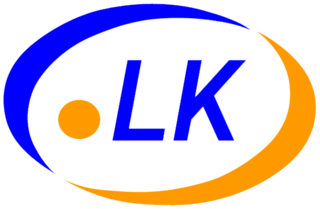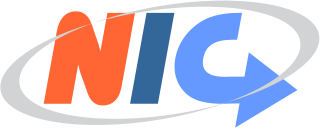A domain name registry is a database of all domain names and the associated registrant information in the top level domains of the Domain Name System (DNS) of the Internet that enables third party entities to request administrative control of a domain name. Most registries operate on the top-level and second-level of the DNS.
The domain com is a top-level domain (TLD) in the Domain Name System (DNS) of the Internet. Created in the first group of Internet domains at the beginning of 1985, its name is derived from the word commercial, indicating its original intended purpose for subdomains registered by commercial organizations. Later, the domain opened for general purposes.

The domain name .org is a generic top-level domain (gTLD) of the Domain Name System (DNS) used on the Internet. The name is truncated from 'organization'. It was one of the original domains established in 1985, and has been operated by the Public Interest Registry since 2003. The domain was originally "intended as the miscellaneous TLD for organizations that didn't fit anywhere else." It is commonly used by non-profit organizations, open-source projects, and communities, but is an open domain that can be used by anyone. The number of registered domains in .org has increased from fewer than one million in the 1990s, to ten million in 2012, and held steady between ten and eleven million since then.

The domain name gov is a sponsored top-level domain (sTLD) in the Domain Name System of the Internet. The name is derived from the word government, indicating its restricted use by government entities. The TLD is administered by the Cybersecurity and Infrastructure Security Agency (CISA), a component of the United States Department of Homeland Security.

.bs is the Internet country code top-level domain (ccTLD) for the Bahamas. It is administered by the University of the Bahamas.
.tl is the current country code top-level domain (ccTLD) for East Timor (Timor-Leste). It is administered through the Council of Country Code Administrators (CoCCA) and second-level registration is available through resellers worldwide with no local presence requirement.

.cy is the country code top-level domain (ccTLD) for Cyprus. Some restrictions exist for various subdomains, but .com.cy is unrestricted to Cypriot entities.

.ec is the country code top-level domain (ccTLD) for Ecuador.
.zm is the Internet country code top-level domain (ccTLD) for Zambia. Registrants of .zm domains must "have a presence in Zambia".

.ug is the Internet country code top-level domain (ccTLD) for Uganda.

.mo is the Internet country code top-level domain (ccTLD) for Macau, China.

.tr is the Internet country code top-level domain (ccTLD) for Turkey. It is administered by trABİS and managed by the Computer Center DNS Group of the ICT Authority. The domain was formerly administered by NIC.tr and managed by the Turkey Internet Society until September 2022.

.mx is the Internet country code top-level domain (ccTLD) for Mexico, which in 2009 was re-opened to new registrations by NIC México. In 2009, the .mx ccTLD was rolled out in three steps:

.so is the internet country code top-level domain (ccTLD) for Somalia. After a long absence, the .so domain was officially relaunched on November 1, 2010, by .SO Registry, which is regulated by the nation's Ministry of Posts and Telecommunications. It was launched through various accredited registrars around the world.

.lb is the Internet country code top-level domain (ccTLD) for Lebanon.

.lk is the Internet country code top-level domain (ccTLD) for Sri Lanka. Foreign companies who do not have a local presence can only reserve their top-level and corresponding open second-level domains. In order to register and use a name they must have a contact address in Sri Lanka.

.lv is the Internet country code top-level domain (ccTLD) for Latvia. It was introduced on 29 April 1993, two years after the country's independence.

.na is the Internet country code top-level domain (ccTLD) for Namibia corresponding to the two letter code from the ISO-3166 standard.

.tz is the Internet country code top-level domain for Tanzania. Historically and due to poor Internet Infrastructure, most top-level domains in Africa were and some are still being technically managed by foreign experts. Through a consultative process, Tanzania Network information Centre (tzNIC), a not-for-profit company was established and registered to administer and manage the operations of the Tanzania country code top-level domain. tzNIC is a limited company with two founding members – the Tanzania Communication Regulatory Authority and the Tanzania Internet Service Provider Association.
In the Domain Name System (DNS) hierarchy, a second-level domain is a domain that is directly below a top-level domain (TLD). For example, in example.com, example is the second-level domain of the .com TLD.














